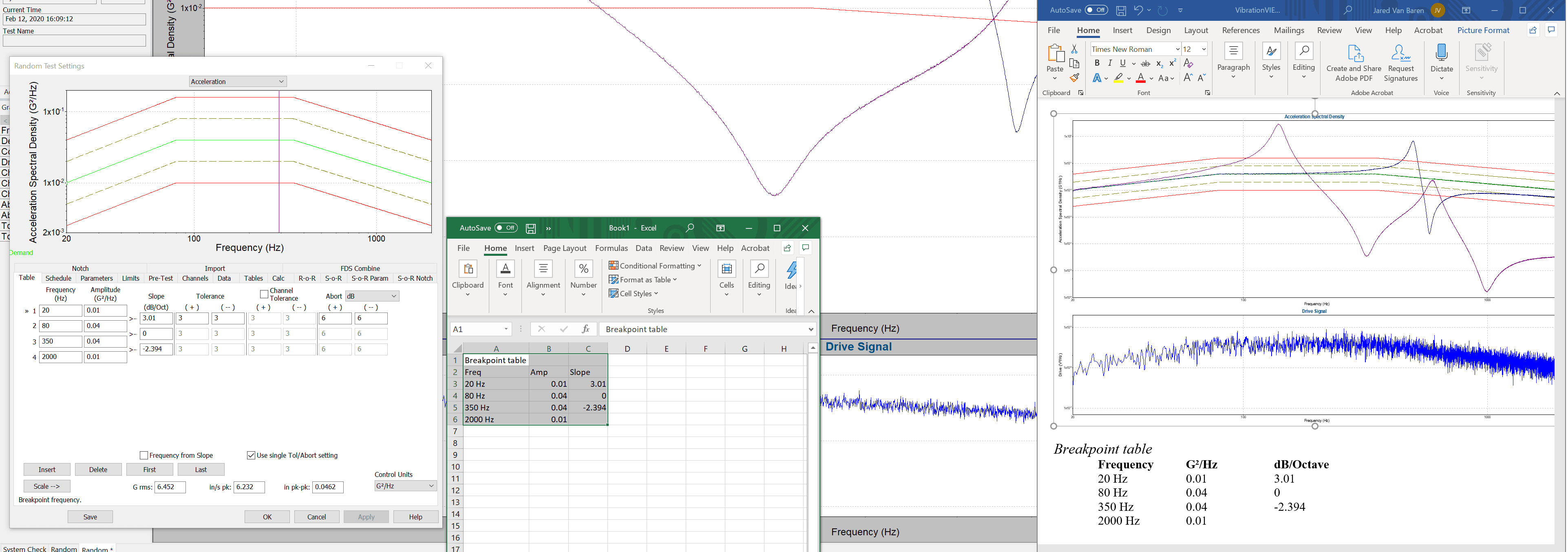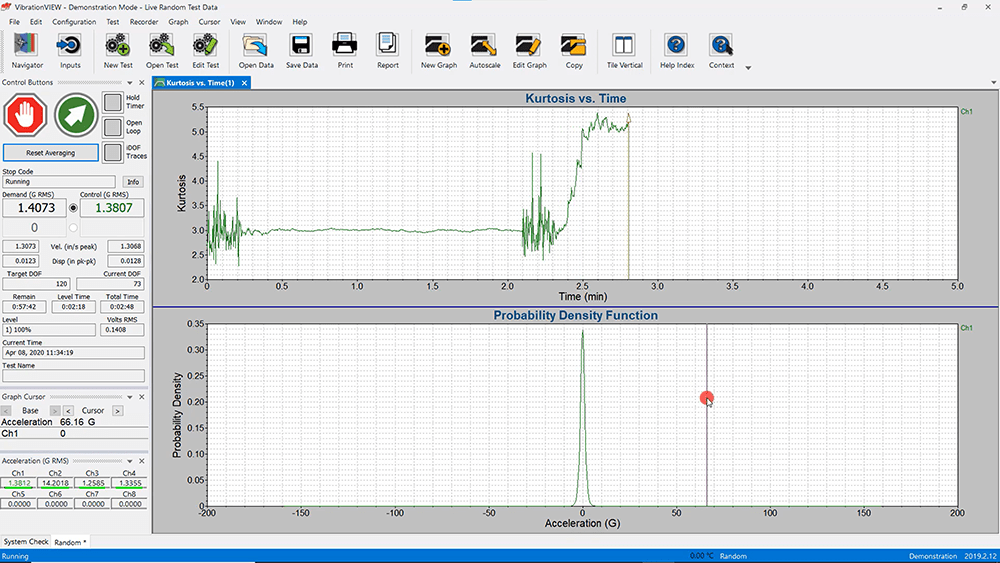Audible disturbances are a discomfort to passengers and must be reduced to improve vehicle performance. Buzz, squeak, and rattle (BSR) testing plays an imperative role in meeting customer expectations.
BSR testing uses vibration to induce responses that can be detected through acoustic analysis. Engineers use these types of tests to evaluate vehicle components based on the noise they generate while in use. The test results can depend on a human interpretation of the noise or sound quality metrics such as loudness, kurtosis, and roughness.
Prospective customers refer to quality reports and test-drive vehicles, and audible noises can deter the customer from purchasing. Engineers seek to eliminate these disturbances for a successful first impression and continued passenger comfort.
Vibration Controllers for BSR Testing

Vibration Research offers control hardware and shakers customized for low-noise operations used in BSR testing, sound limit testing, sound recordings, and anechoic chambers. The VR9500 and VR10500 controllers have a low noise floor (<70nV/sqrt{Hz}) with a 130dB dynamic range. The controllers are compatible with all shakers and do not require a special board in the controlling PC. Additional features include:
- Control sine, random, or shock vibration to 50,000Hz
- Field Data Replication with sine, random, or shock
- 104,000 lines of resolution (26,000 with the VR9500)
- 24-bit analog inputs
The VR9500 is a 4-channel, stackable unit with a range of 1 to 128 channels and two 24-bit output channels. The VR10500 is a 16-channel, stackable unit with a range of 8 to 512 channels and four 32-bit output channels for multiple shaker control. The VR9500 or VR10500 vibration controllers are compatible with the VibrationVIEW software, which includes relevant features for closed-loop testing.
Shaker Systems
BSR-approved electrodynamic shakers are customized for low noise operation. The VR5800-BSR, for example, has an added DC power supply that generates a clean, quiet field and allows for tests to be run at low amplitude and sound levels.
The VR electrodynamic shaker systems consist of a shaker and a matching linear direct-coupled power amplifier. Additional components can be added to tailor the system to a lab’s requirements. These systems are designed and manufactured with their shakers and matching amplifiers in tandem.
Unsure of the correct shaker size for your operation? Learn more about shaker force ratings in the Determining the Correct Shaker Size blog post.
Early Detection of Buzz, Squeak, and Rattle (BSR)

Ideally, an engineer will identify most issues with BSR early on by running vehicle test profiles on a shaker. The VibrationVIEW software features reliable sine, random, and shock control. The user can set up and perform a test with ease and access valuable graph displays such as the power spectral density and fast Fourier transform. Download a free demo and put the software to the test.
Download Free VibrationVIEW DemoSine Testing Software
Often, noise (BSR) is generated by components in resonance. In Sine, the user can automatically detect resonances using a swept or fixed-frequency sine wave test while controlling acceleration, velocity, and displacement. It is imperative to identify resonances because vibration of the same frequency will amplify the resonant frequency and lead to damage and, eventually, failure.
After the user confirms the resonance of a device under test (DUT), they can run an SRTD. An SRTD test brings the DUT to failure by exciting the known resonance.
Random Testing Software
In Random, the user can generate a test profile that is reflective of the end-use environment. The VibrationVIEW software includes a comprehensive suite of graph display options, including power/acceleration spectral density (PSD), output voltage spectral density, and channel-to-channel transmissibility.
The user can also apply Vibration Research’s Kurtosion® software in conjunction with Random to produce a more realistic test. Present-day random testing assumes a Gaussian distribution of random data with a kurtosis value of 3. However, some data do not fit the Gaussian distribution. In such instances, a kurtosis value of 3 may omit higher peak values and result in under-testing. Kurtosion employs kurtosis control to generate a random test that matches the damage potential of the end-use environment.

Replicating On-Road Conditions
When performing a silent shaker test for early verification, engineers may need to replicate on-road conditions in the lab.
A random vibration test produces a waveform similar to the field data but may not always reflect the intensity of that environment. High peak accelerations present in the original environment can be the source of considerable damage, and a test without the peak accelerations can result in under-testing. The Field Data Replication (FDR) software is one option for accurately recreating a test environment, including high peaks, using recorded data.
FDR reproduces an original waveform on a shaker in the lab. The test engineer can record a lengthy time-history file and play it back as a control reference. The purpose is to include the higher intensities by replicating a waveform from the field environment. The result is 1:1 replication.
FDR quickly brings a vibration test to the full level and requires minimal setup/configuration. The test does not have to be random as the goal of an FDR test is to replicate any environment.
Acquire Field Data with VR Mobile: Autonomous DAQ System
Autonomous data collection is imperative when testing a vehicle in the field. The user can control the lightweight and portable ObserVR1000 hardware with the VR Mobile application, which runs on a smartphone or tablet using a WiFi connection. Recording can be set up, monitored, and modified in the field without a wired configuration, which delivers flexibility and simplicity.
In VR Mobile, the user can set up an event trigger on vehicle startup, G-levels, a transient event, and more. They can also record time reference and location data automatically during signal recording.

Test Solutions for Product Development
Before BSR testing, engineers can evaluate product design with VR’s leading-edge vibration control systems and reliable, user-friendly software. Download a free demo and put the software to the test.
Interested in learning more about automotive testing with Vibration Research systems? Contact us!
